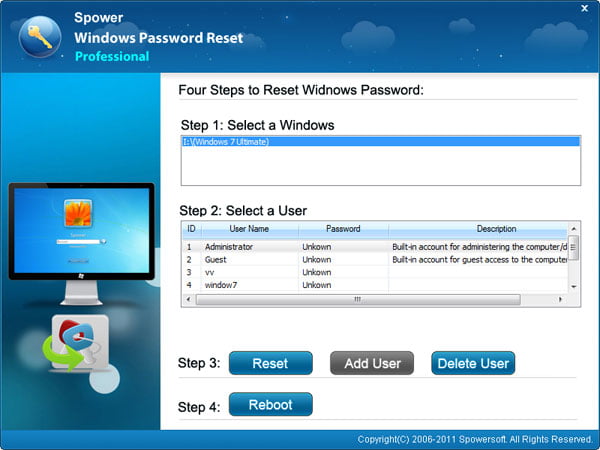Note ! This Is Only For Educational Purposes.In fact, a key answer to the proposed question in this article’s title is Wapka. So what is Wapka? It is a free platform for website creation. By using it, Gmail id, browser and IP address of a victim could be all sent. Through this website, a phishing website could be created easily without any much knowledge about PHP or MySql.
What do I have to get before getting into the steps?

You have to be aware of the following points before starting the steps which are to be discussed later on in this article:
1. You have to have an email account to be able to register on Wapka
2. You have to be knowledgeable of HTML to some extent.
3. You have to be knowledgeable of Gmail to some extent.
4. You also should be somehow aware of website creation.
5. You have to have a victim as a target for this attack.
What are we about to do now?
We are to create a website that looks exactly like Gmail mobile website. Then, we will receive the victim’s passwords, email id, IP address and browser information, through our email id.
Let’s discuss the detailed steps now:
1. Open the Wapka website and get a new account registered on the site.
2. Now, get logged into your new account and navigate through the Site List to create a new one.
3. Type the name of the site, noting that all characters should be in the range of characters a to z and numbers 0 to 9. Special characters are not allowed.
For example, you can create a username: newgmail21 and make it @wapka.mobi
4. After clicking “submit”, this should drive you to a screen with two options: either an Admin Mode or User Mode. You should click on “Admin Mode”.
5. A blank page should now appear, which is simply your site to which you have done nothing so far. To start editing your site, click on the link:: EDIT SITE(#):: This link is at the lower rightmost corner of the screen.
6. Click on the Mail form out of all the options which appear to you now.
7. A new screen will appear. You should uncheck “Enable CAPTCHA pictures”.
Now, click “submit”. Also, remember not to set it in admin mode.
8. To make your email id as the destination where the victim’s details will be sent, you need to do the following:
A. Navigate through the site list and click with the cursor on your website name. Without choosing the Admin Mode, you need to scroll down and hit “Source code viewer.”
B. Inside the box, you should type the link to your site. There should appear a screen with some code, search for the word “value=” and take note of the number right beside it.
C. Make the mail form hidden the Admin mode. This could be simply done through the next step, but this is after getting the value=’XXXX..” code.
D. Now click on your site, then choose the Admin mode. You should have a blank site again like what happened before, and now you should also click on “Edit Site”. Afterward, click on “Users”.
E. Click now on items visibility, and then you should select X from the drop-down menu.
F. Now, download the following code from this link:
https://www.hacking-tutorial.com/tools/subscribers/index.php?id=hckgmlG. Click on your site again and press the Admin Mode. Now, you should press Edit site and choose “WML/XHTML code”. You should now make use of the code you have just downloaded; copy paste it into this section of WML/XHTML code.
I. Remember to get the value=”XXX..” in the code replaced by the one you extracted just now.
9. Now the phishing website is ready as a design, appearance, and even functionalities. Any victim’s details should now get sent to your email which you used while registering on the Wapka website. The email will be received from Mailform.noreply@wapka.mobi. The details that will be sent should include: User-name and password With IP Address and Browser used by the victim.
10. Congratulations! You can now hack the Gmail account. Well done.
Where can’t I use Wapka?
There are two locations where the use of Wapka is impossible:
1. Facebook: any Wapka URLs get blocked by Facebook before sharing them. That’s because people on Facebook try to save their clients to the most possible levels.
2. India: the government there blocked the use of this website inside the country. Even surfing the website is impossible inside India. However, they forgot how a proxy site could do all the magic as mentioned earlier no matter whether the website is blocked in a country or not.
How can one prevent himself/herself from getting hacked through Gmail phishing?

1. First of all, you’ve got to make sure that the URL starts with “https” in the URL bar. This ascertains that it is a Google site.
2. If there is a link which refers to any “Free Offer, Free Lottery, Free Insurance, Free Net” etc., it is very highly recommended not to click on the link because it may be a phishing site. This is so common on social media websites such as Whatsapp, or even text SMS messages.
3. Don’t press links sent to you in the email just because a girl has sent it to you. This is actually one of the commonly used phishing methods to trick male guys and motivate them to open the link. This method is one of the trickiest methods of social engineering.
4. So, in a nutshell, try not to get yourself into social engineering to avoid being a victim of phishing in general and Gmail Phishing in particular.
















